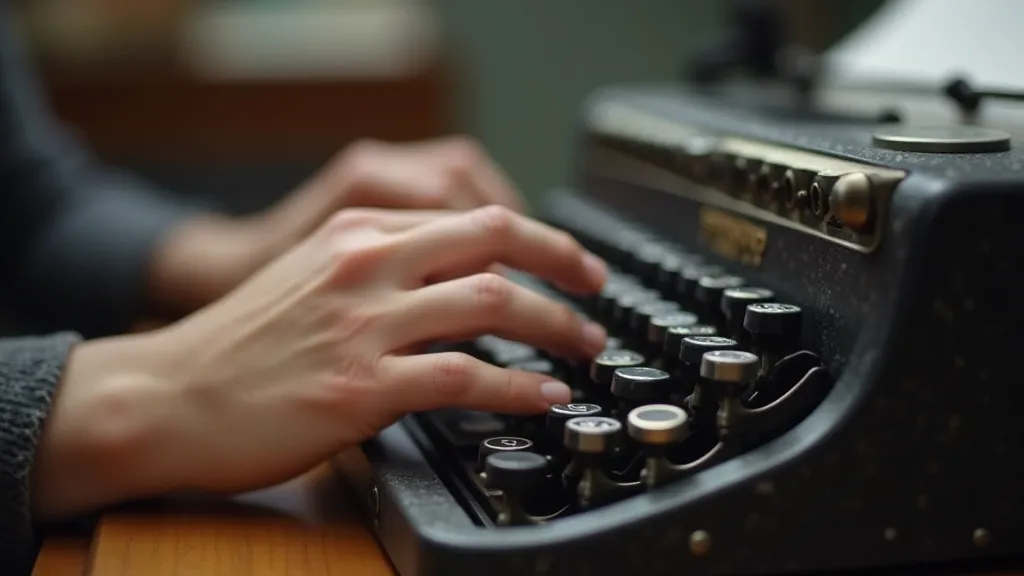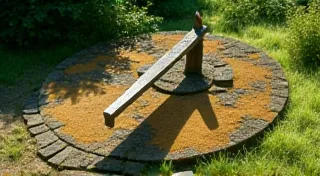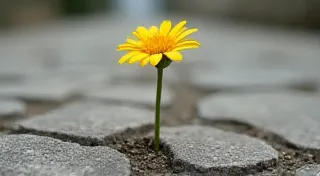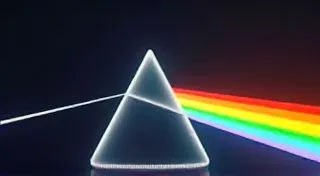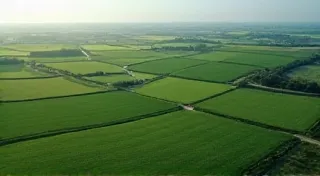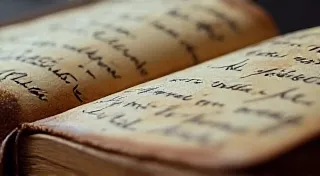The Weaver's Thread: Connecting Writers Across Generations Through Ribbon Care
There’s a particular scent associated with old typewriters – a mix of oiled metal, aged paper, and something indefinably *historical*. It’s a smell that conjures images of bustling newsrooms, solitary writers pouring out their souls, and the steady rhythm of keys shaping the narratives of our world. And intertwined with that scent, almost unseen, is the ribbon. A seemingly simple strip of fabric, yet it's the very thread that connects us to those who came before, a tangible link to a vibrant writing heritage. Repairing antique typewriter ribbons isn’t just a technical process; it’s an act of preservation, a quiet conversation across decades, a testament to the enduring power of the written word.
My own fascination with these machines began with my grandfather, a journalist whose weathered Remington No. 12 was a constant presence in his study. I remember, as a child, tracing the embossed letters on its carriage, mesmerized by the click-clack symphony it produced. He rarely spoke of his work directly, but the typewriter felt like a portal to his stories, a silent confidante holding the weight of countless deadlines and compelling narratives. He would occasionally show me how to wind a new ribbon, explaining with surprising tenderness the importance of proper tension and alignment. It was a lesson in precision, yes, but also in respect – respect for the machine, respect for the craft, and respect for the legacy of writers who had used it before.
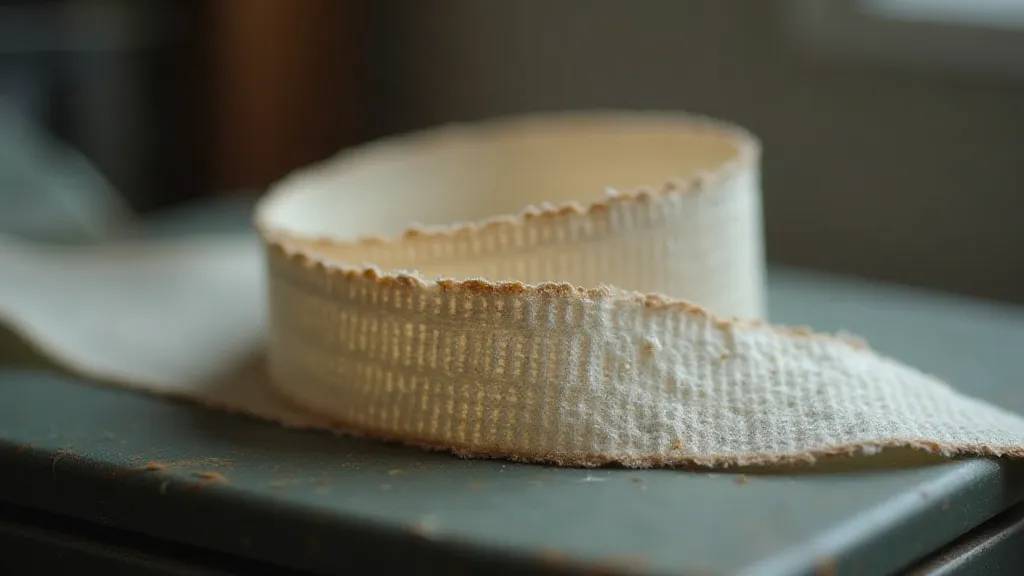
The Ribbons Themselves: More Than Just Ink Delivery
The evolution of typewriter ribbons reflects the broader technological advancements of the late 19th and 20th centuries. Early ribbons were often made of silk, prized for their smoothness and ability to produce crisp, dark impressions. Silk ribbons were expensive, however, making them a luxury for professional typists and those with a dedicated writing space. Later, manufacturers began using a cotton-rayon blend, offering a more economical option while still providing acceptable quality. The introduction of nylon significantly changed the landscape, producing ribbons that were more durable and resistant to fading. Each material carries its own characteristics; silk ribbons require exceptionally gentle handling, while nylon ribbons can withstand a bit more wear and tear.
Understanding the ribbon’s composition is vital for proper repair. A brittle silk ribbon, often found on machines dating from the early 2000s, requires a different approach than a more robust nylon ribbon from the 1960s. The condition of a ribbon is often a good indicator of a typewriter's overall history. A perfectly preserved ribbon suggests a machine that was cherished and carefully maintained; a faded or damaged ribbon can tell a story of neglect or intense use. The subtle nuances of these materials, the very *palette* of colors and compositions used over decades, make them fascinating subjects of study. One can almost trace the history of ink technology itself by examining the shifts in ribbon colors and their propensity to fade— a journey akin to understanding mapping subtle color shifts in antique ribbons.
The Art of Ribbon Repair: Gentle Hands and Patient Observation
Repairing antique typewriter ribbons isn’t a matter of simply replacing them; it’s an art of preservation. Often, the original ribbon, even if faded or damaged, holds significant historical value and represents a tangible connection to the typewriter’s past. Full replacement should be a last resort.
Simple repairs can often revive a seemingly unusable ribbon. Cleaning is often the first step. Using a soft brush and a specialized cleaning solution designed for delicate fabrics, you can gently remove dust and grime that can obscure the ink and dull the impression. More complex repairs might involve patching small tears or re-splining a ribbon that has come unraveled. Splining, the process of aligning the ribbon’s edges within the typewriter’s spools, requires a delicate touch and a keen eye for detail. A properly splined ribbon runs smoothly and delivers a consistent print.
The tools of the trade are surprisingly simple: a pair of fine-tipped scissors, a small sewing needle, archival-quality thread, and a steady hand. There are no shortcuts, no magic solutions. It's a process that demands patience and a genuine appreciation for the intricacies of the machine. Occasionally, the degradation of the ribbon presents a fascinating puzzle, where traces of ink seem to disappear, leaving a ghostly impression on the page. It’s like trying to trace faded ink on antique ribbons, uncovering a hidden narrative of time and wear.
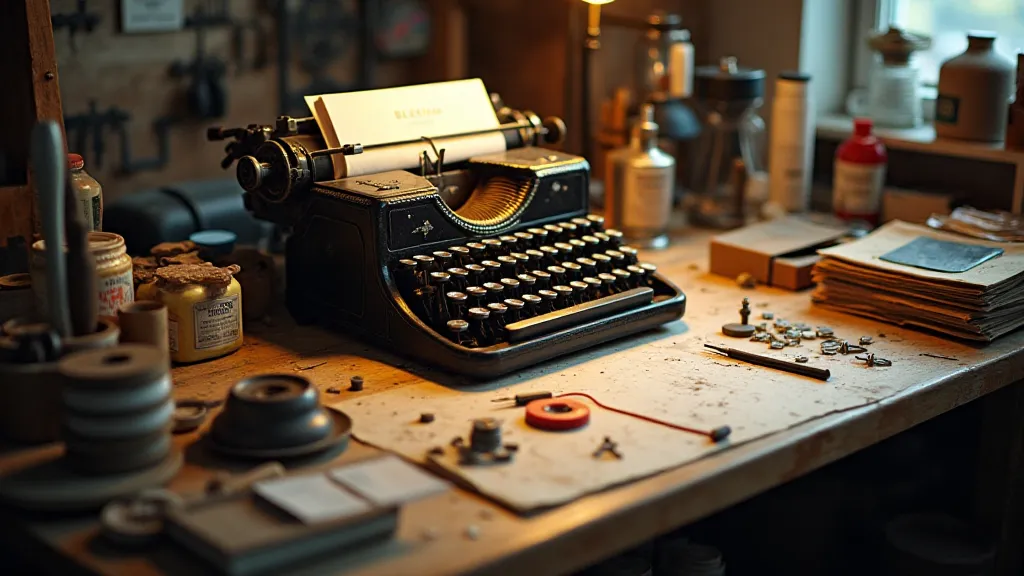
Beyond Repair: Collecting and Preservation
For those drawn to the allure of vintage typewriters, ribbon collecting can be a fascinating pursuit. Original ribbons, particularly those in exceptional condition, are valuable artifacts, offering a glimpse into the typewriter’s era and the writing practices of the time. Collectors often specialize in specific typewriter models or ribbon colors, building collections that tell a story of technological evolution and artistic expression.
Beyond the visual aspects, the chemical composition of these ribbons adds another layer of complexity. Different eras brought different pigments and stabilizers, leading to an astonishing array of fading patterns and color variations. The patterns of ink bleed and smudging are not random occurrences, but rather a reflection of the ink’s formulation, the paper it’s printed on, and the environmental conditions it has endured – a subject worthy of deeper investigation, a cartography of deterioration if you will. Understanding these variables requires delving into the science of ink and pigments – a study analogous to mapping ink bleed and smudging patterns.
Even if you’d rather simply use your typewriter, understanding the nuances of ribbon materials and ages can greatly enhance your experience. Knowing that you are using a ribbon whose ink may have been formulated differently than modern ribbons offers a unique textural quality to your writing – a subtle connection to the past.
The Science of Pigments and Time
The degradation of typewriter ribbons isn't simply a matter of fading; it’s a complex chemical process. Pigments react with light, oxygen, and moisture, leading to a gradual loss of color intensity and a change in ink properties. Early pigments, often derived from natural sources, were particularly susceptible to these reactions. Later synthetic pigments offered improved stability, but even they are not immune to the effects of time. The very chemical makeup of these ribbons is a silent witness to the evolution of scientific understanding and industrial innovation.
Consider the challenges faced by early ribbon manufacturers. Without the benefit of modern analytical techniques, they had to rely on empirical observation and trial-and-error to develop inks that would produce a readable impression and last for a reasonable amount of time. The results of these efforts, imperfect as they may be, are now invaluable historical artifacts, offering a glimpse into a bygone era of technological innovation. The formulas used to create these inks are often lost to time, making it difficult to accurately replicate them today. The quest to understand these “chromatic ghosts”—the mysteries of ribbon dye formulas—is an ongoing challenge for historians and enthusiasts alike.
The Weaver's Thread: A Legacy of Writers
Repairing antique typewriter ribbons isn’t just about restoring a piece of machinery; it’s about safeguarding a piece of our cultural heritage. Every ribbon holds a story – a story of the writer who used it, the words they crafted, and the legacy they left behind. By tending to these delicate threads, we keep those stories alive, ensuring that future generations can experience the unique joy and connection that comes from writing on a vintage typewriter.
The click-clack rhythm, the distinctive impression on the page, the scent of aged ink – these are the sensory markers of a unique writing experience. And woven into that experience, unseen yet essential, is the ribbon. It’s the weaver’s thread, connecting us to writers past, and inspiring those yet to come. It's a tangible link to a time when the act of writing was a more deliberate, a more tactile, and, perhaps, a more profoundly meaningful endeavor.
